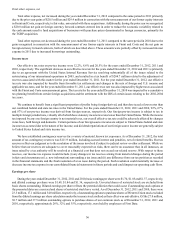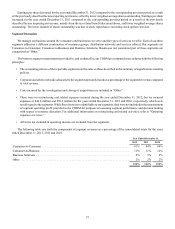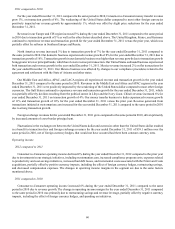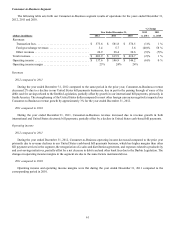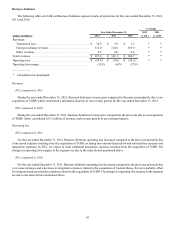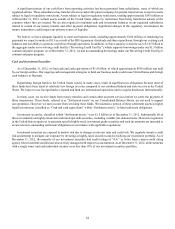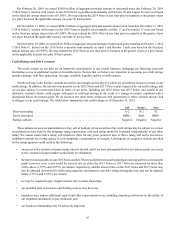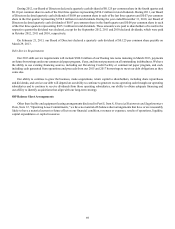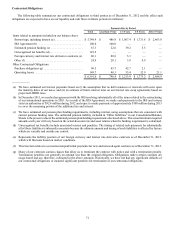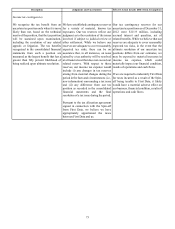Western Union 2012 Annual Report Download - page 69
Download and view the complete annual report
Please find page 69 of the 2012 Western Union annual report below. You can navigate through the pages in the report by either clicking on the pages listed below, or by using the keyword search tool below to find specific information within the annual report.64
A significant portion of our cash flows from operating activities has been generated from subsidiaries, some of which are
regulated entities. These subsidiaries may transfer all excess cash to the parent company for general corporate use except for assets
subject to legal or regulatory restrictions. Assets subject to legal or regulatory restrictions, totaling approximately $305 million as
of December 31, 2012, include assets outside of the United States subject to restrictions from being transferred outside of the
countries where they are located. We are also required to maintain cash and investment balances in our regulated subsidiaries
related to certain of our money transfer and other payment obligations. Significant changes in the regulatory environment for
money transmitters could impact our primary source of liquidity.
We believe we have adequate liquidity to meet our business needs, including approximately $100 million of remaining tax
payments we expect to make in 2013 as a result of the IRS Agreement, dividends and share repurchases, through our existing cash
balances and our ability to generate cash flows through operations. In addition, we have capacity to borrow up to $1.65 billion in
the aggregate under our revolving credit facility (“Revolving Credit Facility”), which supports borrowings under our $1.5 billion
commercial paper program. As of December 31, 2012, we had no outstanding borrowings under our Revolving Credit Facility or
commercial paper program.
Cash and Investment Securities
As of December 31, 2012, we had cash and cash equivalents of $1.8 billion, of which approximately $930 million was held
by our foreign entities. Our ongoing cash management strategies to fund our business needs could cause United States and foreign
cash balances to fluctuate.
Repatriating foreign funds to the United States would, in many cases, result in significant tax obligations because most of
these funds have been taxed at relatively low foreign tax rates compared to our combined federal and state tax rate in the United
States. We expect to use foreign funds to expand and fund our international operations and to acquire businesses internationally.
In many cases, we receive funds from money transfers and certain other payment services before we settle the payment of
those transactions. These funds, referred to as “Settlement assets” on our Consolidated Balance Sheets, are not used to support
our operations. However, we earn income from investing these funds. We maintain a portion of these settlement assets in highly
liquid investments, classified as “Cash and cash equivalents” within “Settlement assets,” to fund settlement obligations.
Investment securities, classified within “Settlement assets,” were $1.5 billion as of December 31, 2012. Substantially all of
these investments are highly-rated state and municipal debt securities, including variable rate demand notes. Most state regulators
in the United States require us to maintain specific highly-rated, investment grade securities and such investments are intended to
secure relevant outstanding settlement obligations in accordance with applicable regulations.
Investment securities are exposed to market risk due to changes in interest rates and credit risk. We regularly monitor credit
risk and attempt to mitigate our exposure by investing in highly-rated securities and diversifying our investment portfolio. As of
December 31, 2012, the majority of our investment securities had credit ratings of “AA-” or better from a major credit rating
agency. Our investment securities are also actively managed with respect to concentration. As of December 31, 2012, all investments
with a single issuer and each individual security were less than 10% of our investment securities portfolio.




